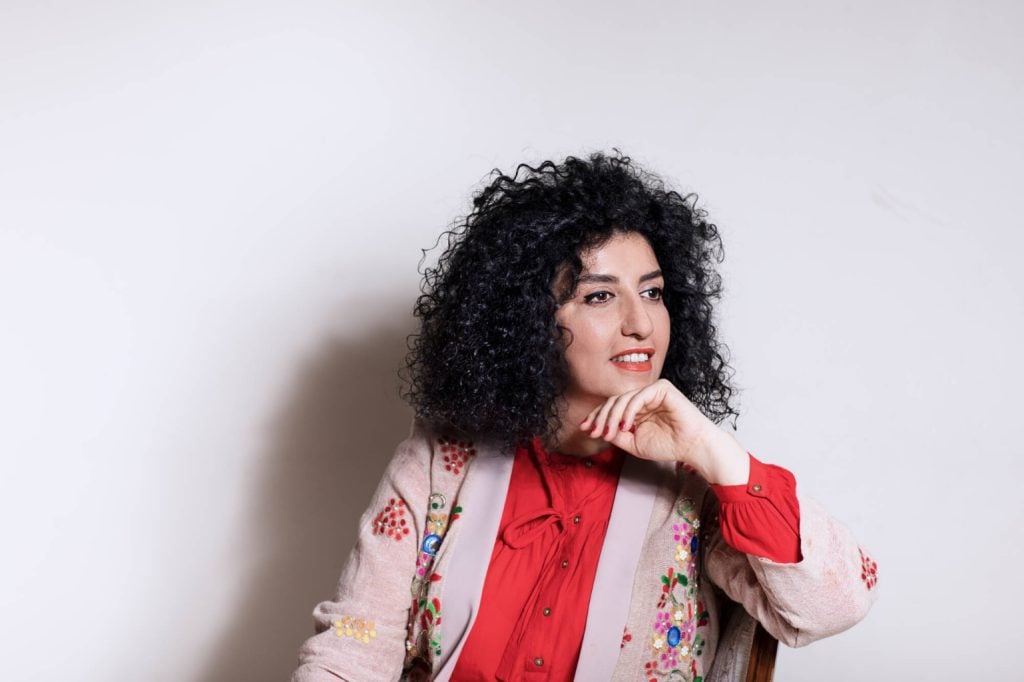This year’s Nobel Peace Prize exhibition tells the story about Narges Mohammadi and her courageous fight for freedom and human rights in Iran. The Nobel Peace Prize laureate has written some of the texts exclusively for the exhibition.
The Nobel Peace Prize Exhibition: WOMAN – LIVE – FREEDOM will be officially opened by the laureate’s family the day after the Nobel Peace Prize ceremony in Oslo. In the exhibition, Narges Mohammadi’s children and husband will see photos from the family album and of their mother and wife’s struggle for women’s rights in Iran. The Nobel Peace Prize laureates in incarcerated in Evin prison in Iran, convicted to more than 30 years for her human rights’ work.
«With her courage and her strong will to fight, Narges Mohammadi is a leading star and an icon the world needs today” said the Executive Director of the Nobel Peace Center, Kjersti Fløgstad. “We hope this exhibition will support the women of Iran and bring their cause back on the international agenda.”
Texts from prison
From her prison cell, Narges Mohammadi has written ten texts exclusively for the Nobel Peace Prize exhibition, with memories of events that have meant a lot to her. She tells about the separation from her children when she was imprisoned when they were three years old, and about the memories from her family’s conversations about politics in her childhood.
“I encountered these words and concepts – ‘execution’, ‘torture’, ‘solitary confinement’ – at an early age; and fighting against violations of human rights became a mission for me from that time on.”
The exhibition also showcases photo projects by six female Iranian photographers who have documented women’s struggle for life and freedom in Iran from 1979 to the present.
The portrait of Narges Mohammadi displayed at the entrance to the exhibition was taken just a few days before she was imprisoned again in April 2022. She wears colorful clothes and smiles optimistically. “I am a woman who loves life,” she says.
«The exhibition is inspired by Narges Mohammadi’s attitude», tells Kjersti Fløgstad. “It is full of color, and shows women who want the freedom to sing, dance and live».
